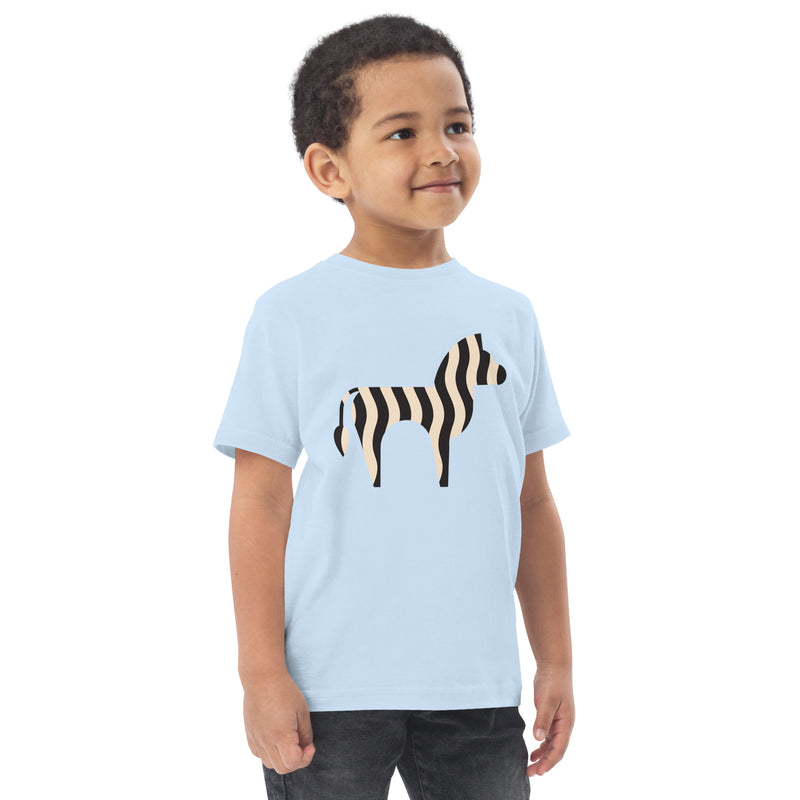
Choosing the Best Fabric for Your Toddler’s Jersey T-Shirt: A Complete Guide
Share
When it comes to dressing toddlers, comfort and practicality are top priorities. A jersey t-shirt is a wardrobe staple for little ones—versatile for playtime, outings, or layering under jackets. However, with so many fabric options available in 2025, selecting the best material can feel overwhelming. As a parent or caregiver, you want a fabric that’s soft, durable, safe, and suitable for your toddler’s active lifestyle. This guide explores the best fabrics for toddler jersey t-shirts, offering insights to help you make the perfect choice.
Why Fabric Matters for Toddler Clothing
Toddlers are bundles of energy, constantly moving, crawling, and exploring. Their skin is also more sensitive than adults’, making fabric selection critical. The right fabric ensures breathability to prevent overheating, softness to avoid irritation, and durability to withstand frequent washes. In 2025, with growing awareness of sustainability and health, eco-friendly and hypoallergenic options are also gaining popularity. Let’s dive into the top fabric choices for toddler jersey t-shirts.
Top Fabric Options for Toddler Jersey T-Shirts
1. Cotton
Why It’s Great: Cotton remains the gold standard for toddler clothing due to its softness, breathability, and natural fibers. It’s gentle on sensitive skin and allows air circulation, keeping your toddler cool during play.
Pros: Hypoallergenic, widely available, and easy to wash. Organic cotton, a 2025 trend, avoids pesticides, appealing to eco-conscious parents.
Cons: Can wrinkle easily and may shrink if not pre-washed. Look for pre-shrunk or blended options.
Best For: Everyday wear, especially in warm climates.
2. Cotton-Polyester Blend
Why It’s Great: A blend of cotton and polyester (typically 50/50 or 60/40) combines cotton’s softness with polyester’s durability and wrinkle resistance. This mix is ideal for active toddlers.
Pros: Holds shape after washing, less prone to shrinking, and often more affordable. The added stretch enhances comfort.
Cons: Less breathable than pure cotton; some blends may feel less natural against skin.
Best For: Playdates or outings where durability matters more than breathability.
3. Bamboo
Why It’s Great: Bamboo fabric, made from bamboo pulp, is a rising star in 2025. It’s incredibly soft, moisture-wicking, and naturally antibacterial, making it perfect for toddlers prone to skin irritations.
Pros: Eco-friendly (sustainably grown), hypoallergenic, and temperature-regulating. It’s also biodegradable, aligning with green living trends.
Cons: More expensive and less common, which might limit availability or increase cost.
Best For: Sensitive skin or families prioritizing sustainability.
4. Modal
Why It’s Great: Derived from beech tree pulp, modal is a semi-synthetic fabric known for its silky texture and strength. It’s a great alternative to cotton for a luxurious feel.
Pros: Highly absorbent, soft, and resistant to pilling. It’s also eco-friendly due to its renewable source.
Cons: Less stretchy, so it may not suit very active toddlers, and it can be pricier.
Best For: Special occasions or as a base layer.
5. Organic Cotton-Jersey Blend
Why It’s Great: A step up from regular cotton, this blend uses organic cotton mixed with a small percentage of other fibers (e.g., spandex) for added stretch and comfort.
Pros: Free from harmful chemicals, soft, and stretchy. The slight elasticity accommodates growth spurts.
Cons: Higher cost and may require special care to maintain quality.
Best For: Long-term use and eco-conscious households.
Key Considerations When Choosing Fabric
Comfort and Skin Safety:
Toddlers have delicate skin, so opt for fabrics that are free from dyes or treatments that might cause rashes. Look for certifications like GOTS (Global Organic Textile Standard) to ensure safety. Avoid synthetic-heavy blends if your child is prone to allergies.
Durability and Washability:
Toddlers are messy—spills, grass stains, and frequent washing are inevitable. Choose fabrics that withstand machine washing without fading or losing shape. Cotton-polyester blends and pre-treated cotton are excellent for this.
Breathability and Climate:
In warmer months, prioritize breathable fabrics like cotton or bamboo. For colder climates, a slightly thicker jersey with a blend can provide warmth without bulk, especially when layered.
Sustainability:
With 2025’s focus on eco-friendliness, consider fabrics with a lower environmental footprint. Organic cotton, bamboo, and modal align with this trend, appealing to environmentally aware buyers on platforms like Etsy.
Stretch and Fit:
Toddlers grow quickly, so a fabric with some stretch (e.g., cotton-spandex blends) ensures a comfortable fit over time. Check for a relaxed or slightly loose cut to accommodate movement.
How to Care for Toddler Jersey T-Shirts
To extend the life of your toddler’s t-shirts:
Wash Gently: Use cold water and a mild detergent to preserve color and fabric integrity.
Avoid Over-Drying: Air dry or use a low-heat setting to prevent shrinkage or damage.
Check Labels: Follow care instructions, especially for bamboo or modal, which may need special handling.
Final Thoughts
Selecting the best fabric for your toddler’s jersey t-shirt is about balancing comfort, durability, and style. Cotton and its blends remain reliable choices, while bamboo and modal cater to specific needs like sensitivity or sustainability. In 2025, with a growing emphasis on eco-conscious parenting, exploring organic options can set you apart. Consider your toddler’s lifestyle, climate, and your values to find the perfect match.
What fabric do you prefer for your little one’s t-shirts? Share your experiences or recommendations in the comments—we’d love to hear from you! In the meantime, check out our Toddler Jersey t-shirt collection https://klipclop.com/collections/jersey-t-shirts
